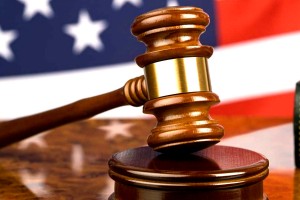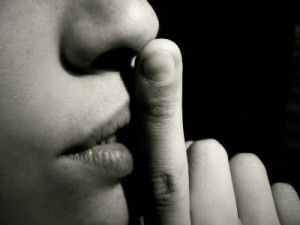Use Of Defendant’s Pre-Trial Silence At Trial: New York’s Constitution And Harmless Error
People v Pavone
2015 NY Slip Op 09315
26 NY3d 629
New York Court of Appeals
Decided on: December 17, 2015
Issue: Whether the People may use a defendant’s post-arrest silence to challenge his credibility regarding possible fabrication of an EED defense.
Holding: The Court of Appeals held that although the use of defendant’s silence for such purpose violates state due process guarantees, the error was harmless because there was overwhelming evidence of guilt. ??New York law has long maintained that evidence of{**26 NY3d at 640} silence at the time of a defendant’s arrest may not be used against that person. InPeople v Rutigliano (261 NY 103, 107 [1933]), this Court explicitly held that a defendant is “under no duty to speak and [defendant’s] silence should not be counted as giving assent to what [defendant] hears. If [defendant] had counsel, [defendant] would doubtless be advised not to talk. If [defendant] had not, [defendant] should not be prejudiced thereby.” Thus, well before the advent of Miranda, New York State recognized and protected a defendant’s right to remain silent by limiting the use of that silence against him. ?Conyers I “was founded on the State’s implied promise not to use against a defendant the constitutionally guaranteed right to remain silent” (emphasis added)]). The Court explained that the right to remain silent was a “fundamental right” under our State Constitution, long protected and recognized under New York law.
New York law has long maintained that evidence of silence at the time of a defendant’s arrest may not be used against that person…the right to remain silent was a “fundamental right” under our State Constitution, long protected and [*9]recognized under New York law.
We also rely on concerns as identified in our prior analysis about the inherent unfairness attendant to the use of a defendant’s pretrial silence, and the proper balance between the probative value of a defendant’s silence and the potential risk of prejudice to the defendant inherent in the use of such evidence . Those concerns are the same regardless of whether the People use defendant’s silence as part of the case-in-chief or for impeachment purposes. As this Court has stated, the reasons for a defendant’s silence when confronted by law enforcement are many, and include “awareness that [defendant] is under no obligation to speak or to the natural caution that arises from [the] knowledge that anything [said] might later be used against [defendant] at trial” (and a belief that defendant’s effort to exonerate oneself would be futile . While a defendant’s silence is ambiguous and lacks probative value, “[j]urors, who may not be sensitive to the wide variety of alternative explanations for a defendant’s pretrial silence, may assign much more weight to it than is warranted and thus the evidence may create a substantial risk of prejudice”
Facts:? Defendant shot and killed Patricia Howard and her romantic partner, Timothy Carter. After his arrest, defendant was immediately read his Miranda rights and during his transport he did not say anything to Police. At trial, without objection, the prosecutor elicited testimony that defendant said nothing else while being transported. Defendant admitted the shootings but presented an EED defense based on his contention that at the time he was depressed and, in a state of anguish, lost rational control for his behavior. The People contested defendant interpretation of the evidence and argued that he was fabricating an EED defense.
In support of his EED defense, defendant testified as to his background, and his physical and emotional condition at the time of the shooting. He presented expert testimony provided by a forensic psychologist, who opined that when defendant shot the victims he suffered an emotional break constituting EED. The expert admitted on cross-examination that he did not have access to the audio recordings of the 911 tape or voice messages but that he did not need to hear those recordings in order to render an opinion. In rebuttal, the People submitted testimony from a forensic psychologist, who opined that defendant had not been suffering under EED when he killed Howard and Carter. He highlighted that he, unlike defendants expert, had listened to the audio recordings of the 911 calls and voice mails, which he believed were important to discerning defendants true mental state. In his opinion, defendant demonstrated a need to control Howard and that his actions, both preceding and immediately after the murders, indicated that he was not suffering from PTSD or EED. The jury returned a guilty verdict on all charges and the Appellate Division affirmed. A judge of the Court of Appeals granted leave to appeal.
On appeal, defendant claims that the People improperly used defendant’s silence in the aftermath of his arrest, against him, violating his constitutional rights requiring reversal of his conviction and a new trial. ?The Court of Appeals held that they agree with the Appellate Division that defendants challenged to the Peoples use of his silence are generally unpreserved and that defendant may have failed to inform the police that he was affected by EED is irrelevant to whether he was or was not suffering from EED at the time. Defendants assertions or lack of assertions, of his emotional state, are not relevant in order to determine whether there was a reasonable explanation or excuse for his actions. Accordingly the Court of Appeals affirmed.
 Legal Analysis: The Court of Appeals held that defendants challenges to the Peoples use of his silence are generally unpreserved (117 AD3d at 1330; see also People v Alvarez, 20 NY3d 75, 81 [2012]. However to the extent the challenge is preserved, the Court turns to whether the People violated defendants constitutional rights.
Legal Analysis: The Court of Appeals held that defendants challenges to the Peoples use of his silence are generally unpreserved (117 AD3d at 1330; see also People v Alvarez, 20 NY3d 75, 81 [2012]. However to the extent the challenge is preserved, the Court turns to whether the People violated defendants constitutional rights.
Under both the Federal and the New York State Constitutions a defendant has the right to remain silent at the time of defendants arrest (N.Y. Const. art. I, 6; U.S. Const. 5th Amend.; see also People v Basora, 75 NY2d 992, 992[1990]. Therefore, a defendants silence after arrest cannot be used by the People in their direct case (Basora, 75 NY2d at 993; People v Conyers, 52 NY2d 454, 459 [1981][Conyers II]; People v Von Werne, 41 NY2d 584, 587 [1977]).
Defendants Silence
The issue in this appeal is whether the People may use defendant’s post-arrest silence to challenge defendant’s credibility regarding possible fabrication of an EED defense. In Conyers II, The Court of Appeals left open the question of whether evidence of silence for impeachment purposes violates the due process clause of our State Constitution (52 NY2d at 457; see also People v Williams, 25 NY3d 185, 194 [2015]. The Court now concludes that the use of defendant’s silence for such purposes violates due process guarantees. New York law has long maintained that evidence of silence at the time of a defendant’s arrest may not be used against that person. In People v Rutigliano, (26 NY 103, 107 [1933]), the Court held that a defendant is under no duty to speak and defendant’s silence should not be counted as giving assent to what defendant hears. If defendant had counsel, defendant would doubtless be advised not to talk. If defendant had not, defendant should not be prejudiced thereby. Thus, well before the advent of Miranda, New York State recognized and protected a defendant’s right to remain silent by limiting the use of that silence against him.
The reasons for a defendant’s silence when confronted by law enforcement are many, and include awareness that defendant is under no obligation to speak or to the natural caution that arises from the knowledge that anything said might be later used against defendant at trial (Conyers II, 52 NY2d at 458, citing Rutigliano, 261 NY at 107; accord United States v Hale, 422 US 171, 176-177 [1975]. While a defendant’s silence is ambiguous and lacks probative value, jurors who may not be sensitive to the wise variety of alternative explanations for a defendant’s pretrial silence, may assign much more weight to it that is warranted and thus the evidence may create a substantial risk of prejudice. (DeGeorge, 73 NY2d at 619; see also Hale, 422 US at 180.
The Court of Appeals held that they reject the Peoples artificial distinction between defendants who are arrested and remain silent before Miranda warnings have been provided, and those who remain silent afterwards. The Court has held that pre-arrest silence cannot be used against a defendant in the Peoples case-in-chief (DeGeorge, 73 NY2d at 620. Once a defendant is arrested, the defendant is confronted by law enforcement and the reasons for the defendants silence are no less ambiguous. Thus, the concern associated with the lack of probative value and prejudice to the defendant applies with equal force once defendant is arrested, even if there is a slight period of delay before a defendant is Mirandized.
Harmless Error
The Peoples use of defendants silence constituted a violation of his state constitutional rights, and as such as he is entitled to a new trial unless there is no reasonable possibility that the error might have been contributed to defendants conviction and that it was thus harmless beyond a reasonable doubt (People v Crimmins, 36 NY2d 230, 237 [1975]. Here, because defendant admitted his guilt but sought to mitigate the penalty based on an EED defense, the question is whether there was overwhelming evidence that defendant failed to establish that defense (People v Best, 19 Ny3d 739, 744 [2012]. A constitutional error may be harmless where evidence of guilt is overwhelming and there is no reasonable possibility that is affected the outcome of the trial. Rather, overwhelming evidence exists that defendant made choices, albeit bad ones, but choices nonetheless. As the Peoples expert explained, defendants ability to act rationally, especially by calmly speaking to the neighbors significantly undercut defendants EED defense, and to the mind of the expert, established that defendant was not affected by EED when he killed Howard and Carter.
The Court held that there is no reasonable possibility that the inclusion of testimony about defendants silence contributed to defendants conviction (Crimmins, 36 NY2d at 218). The information about defendants post arrest silence, and the implication by the People that defendant fabricated the EED defense, were before the jury. In light of the evidence presented against defendant there is no reason for the Court to conclude, that defendants testimony as to his silence had any effect on the verdict. On this record the credentials and testimony of the dueling experts was far more relevant to the jury including that the Peoples expert had greater experience and knowledge of EED, and concluded that defendants actions were those of a stalker.
The Court of Appeals held that under these facts, they are unable to say that defendants constitutional right to remain silent requires a new trial. There was overwhelming proof and of no reasonable possibility that defendant did not suffer under an extreme emotional disturbance and affirmed.


